If you’ve been wondering how much waterproofing membrane you need for your next shower or bathroom project, you’re in the right place. Waterproofing may not be the flashiest part of your renovation — but it’s one of the most important. With the right materials and coverage, you can prevent leaks, mold, and water damage before they even start. In this guide, we’ll walk through everything you need to know about calculating membrane coverage and using Hydroblok’s waterproofing system to make your project watertight and worry-free.
Why Waterproofing Is Essential for Showers
Waterproofing is the invisible hero of any bathroom remodel. Showers are constantly exposed to moisture, and without a proper waterproofing system in place, water can seep behind tiles and walls, causing rot, mold, and structural damage. Even small leaks can lead to major repair costs down the line. That’s why shower systems like Hydroblok are engineered with waterproofing in mind. Their pre-sloped shower pans and waterproof panels already offer protection, but seams, joints, and transitions still need extra sealing.
By installing a high-quality membrane in those vulnerable spots, you’re locking in a moisture-proof barrier that extends the life of your bathroom. It’s not just about code compliance — it’s about peace of mind. So before you even pick up a tile, make sure your base is solid and sealed.
What Is a Waterproofing Membrane?
UN waterproofing membrane is a protective layer applied over walls, floors, or surfaces to block water from seeping into the structure. Think of it as a raincoat for your bathroom — it keeps moisture out and structural integrity in. In the context of showers, membranes are typically applied over cement backer boards or used with pre-waterproofed systems like Hydroblok. There are two main types: sheet membranes and liquid membranes.
Sheet membranes, like Hydroblok’s waterproofing rolls, are easy to measure, cut, and install. Liquid membranes are painted or rolled on and harden to form a continuous barrier. Both types prevent leaks and protect against mold, but when paired with Hydroblok’s waterproof-ready panels, you’ll often need just enough membrane to seal joints, corners, and transitions. The key is knowing how much you need — not overbuying, but also not coming up short.
How Much Waterproofing Membrane Do I Need?
If you’ve been asking yourself how much waterproofing membrane do I need, the answer depends on your total shower surface area. Start by measuring the height and width of each wall, then include the floor, any built-in benches, and niches. Once you have your total square footage, add 10–15% to account for overlaps, cuts, and trimming errors. This ensures you don’t run out mid-project.
For example:
- Wall 1: 3 ft x 8 ft = 24 sq ft
- Wall 2: 3 ft x 8 ft = 24 sq ft
- Back Wall: 5 ft x 8 ft = 40 sq ft
- Floor: 3 ft x 5 ft = 15 sq ft
- Bench: 2 ft x 2 ft = 4 sq ft
- Total before buffer: 107 sq ft
- Total with 15% buffer: ~123 sq ft
If you’re using Hydroblok’s waterproof panels, you’ll likely need membrane only for the seams and transition points, which means you could get by with less. Still, it’s always better to round up than risk being short.
Where to Apply the Waterproofing Membrane
Even though Hydroblok panels are pre-waterproofed, you’ll still need to apply membrane in specific areas to ensure a complete seal. These high-risk zones are where water most commonly finds its way in — and trust us, skipping them can come back to haunt you. That’s why Hydroblok provides flexible membrane rolls and sealant that work perfectly for patching these vulnerable spots.
Apply membrane at:
- All vertical and horizontal seams between panels
- Inside and outside corners
- Around shower valves and pipe penetrations
- Shower niches, benches, and ledges
- Floor-to-wall transitions and curbs
These are the areas most prone to leaks, and covering them with membrane creates an airtight barrier that locks moisture out. It only takes a few extra minutes to do it right — and it’s worth every second for long-term protection.
What Type of Membrane Should You Use?
Hydroblok’s sheet-style waterproofing membrane is the go-to for ease, precision, and compatibility. Unlike liquid membranes that need multiple coats and careful timing, Hydroblok sheets can be cut to size, stuck on, and sealed in one go. This makes them a great option for DIYers and pros alike. The key is to use a membrane that works with the rest of your shower system — and Hydroblok’s solutions are designed to be fully compatible from start to finish.
Use sheet membrane for:
- Straight seams and corners
- Flat wall and floor transitions
- Bench edges and curb faces
- Quick, clean installs without messy liquids
If your project includes curved surfaces or unconventional layouts, liquid membranes can help fill those gaps. But for standard installations using Hydroblok boards, the sheet membrane and sealant combo will give you a cleaner, more reliable result.
Do You Need a Liquid Membrane?
In most Hydroblok installations, you don’t need a liquid membrane. That’s one of the major perks of their pre-waterproofed panels and foam board system. The only time you might consider a liquid waterproofing product is if you’re doing a custom build that involves irregular shapes, tricky corners, or non-Hydroblok surfaces. Liquid membranes are brushed or rolled on and can coat rounded edges or curves that sheets can’t reach. However, for standard walk-in showers, Hydroblok’s sheet membrane and sealant combo is all you need.
It’s cleaner, faster, and easier to apply — no waiting for layers to dry or second-guessing coverage. If you do mix systems, make sure the products are compatible. Some liquid membranes don’t bond well with foam boards or sealants. When in doubt, go all-in with Hydroblok’s fully integrated system for the most stress-free installation
How to Apply the Membrane Correctly
Proper application makes all the difference. Start by cleaning the surface — remove dust, debris, or moisture. If you’re applying Hydroblok’s sheet membrane, use their recommended sealant or adhesive and press the sheet firmly into place. Smooth it out with a roller or your hand to eliminate bubbles or folds. Always overlap seams by at least 2 inches, and apply sealant between overlaps for extra protection. In corners, use pre-formed corner pieces or fold the membrane carefully without cutting.
For valves, pipes, and fixtures, use Hydroblok’s pre-fabricated seals or cut snug holes in the membrane and seal the edges. Finally, let everything cure according to product instructions before applying tile. A rushed job can compromise the entire waterproofing layer. Take your time, double-check seals, and inspect for missed areas. When done right, this step locks out moisture and gives you the confidence that your shower is sealed tight.
Can You Use a Leftover Membrane?
Absolutely — leftover membrane can be a lifesaver for future patch jobs, repairs, or upgrades. If stored correctly, unused sheets can last for years. Keep them in a dry, temperature-controlled place, away from direct sunlight or humidity. Reseal the packaging to keep the roll from drying out or getting dusty. Some homeowners use leftover membrane to seal around future plumbing installations or for waterproofing laundry rooms, utility spaces, or under sinks.
Just make sure the membrane is still flexible, clean, and free from any defects before using it again. One tip: label the leftover membrane with the project it was used for, so you know its origin and compatibility down the line. And remember — if you were calculating how much waterproofing membrane do I need, it’s always better to have a little extra than come up short.
Where to Buy Hydroblok Waterproofing Membranes
You can purchase Hydroblok’s waterproofing membranes and sealants directly through authorized retailers, local building supply stores, or on the official Hydroblok website. Shopping directly ensures you’re getting authentic, top-grade materials and the latest versions of their product lineup. Rolls are available in different sizes depending on your project needs — so whether you’re doing a small walk-in shower or a full spa bathroom, there’s a match for your square footage.
Buying from Hydroblok also gives you access to installation videos, how-to guides, and customer support, which is especially helpful if you’re doing a DIY job. Plus, you can bundle accessories like corner seals, valve seals, and waterproof adhesives to make sure your project is fully covered from start to finish. Investing in high-quality membrane now means avoiding major headaches later — and Hydroblok makes it easy to get everything you need in one go.
Final Thoughts
Still wondering how much waterproofing membrane you need? It all comes down to measuring your space, planning for overlap, and knowing which areas require extra attention. Whether you’re building a brand-new shower or remodeling an old one, waterproofing is what separates a long-lasting bathroom from one that’s prone to costly repairs.
With Hydroblok, you’re not just getting individual parts — you’re getting a complete, reliable system designed to make waterproofing easier, faster, and more effective. From pre-waterproofed panels to high-quality membrane rolls and sealant, everything is built to work together.
Ready to waterproof like a pro?
Shop Hydroblok’s complete system now — waterproofing rolls, sealant, corner seals, and more!
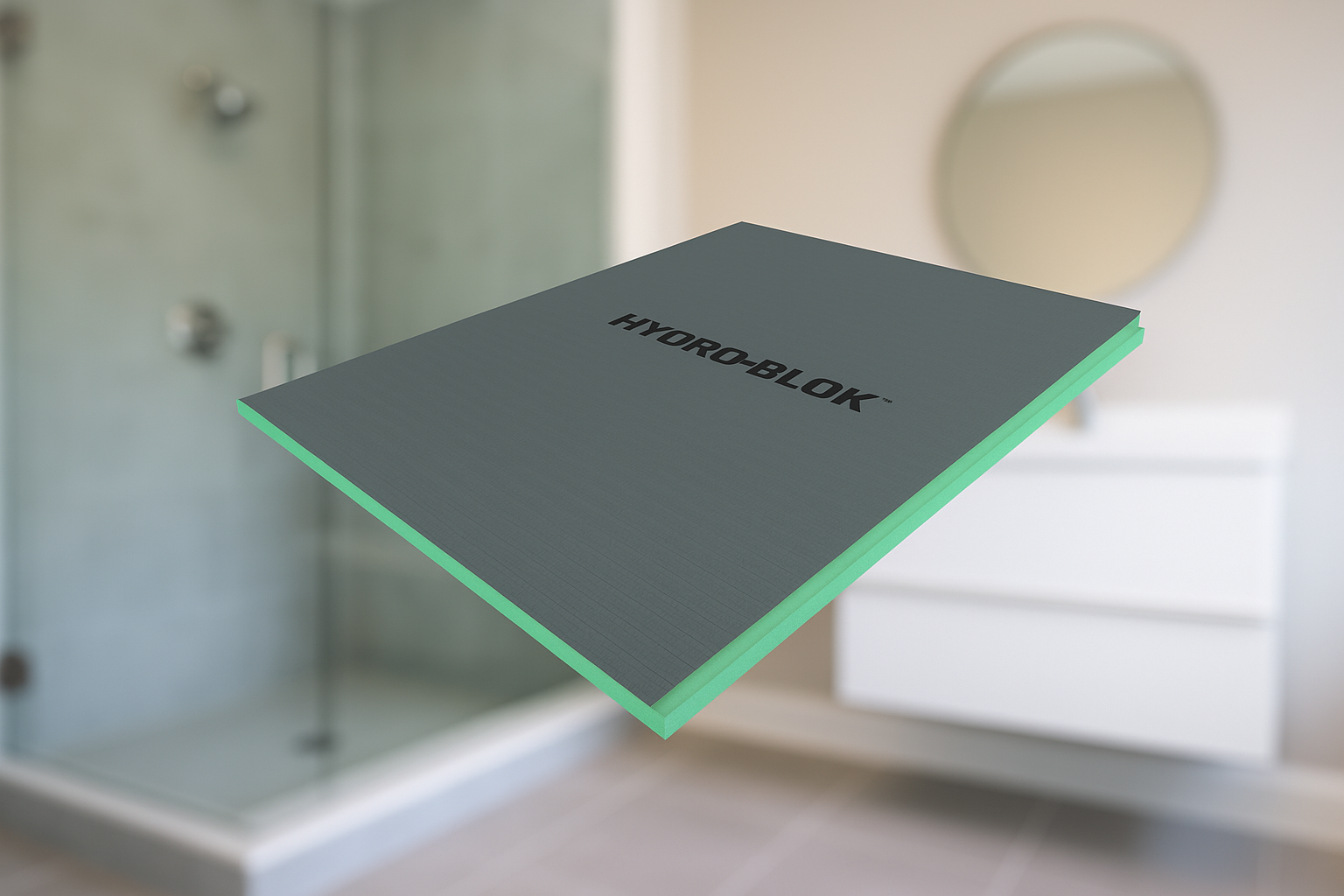
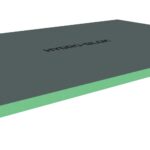
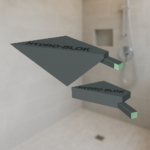
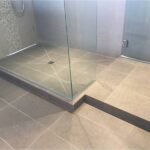
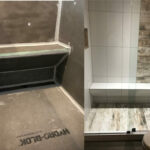
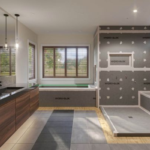
Partagez cet article
Choisissez votre plate-forme :